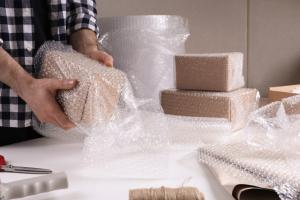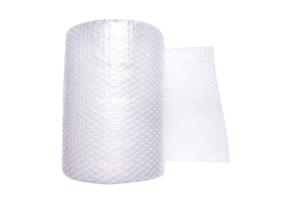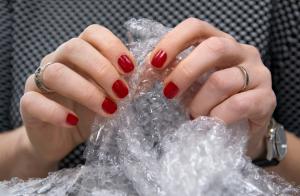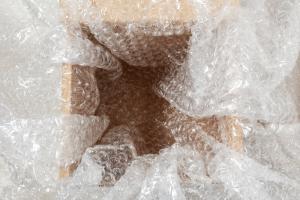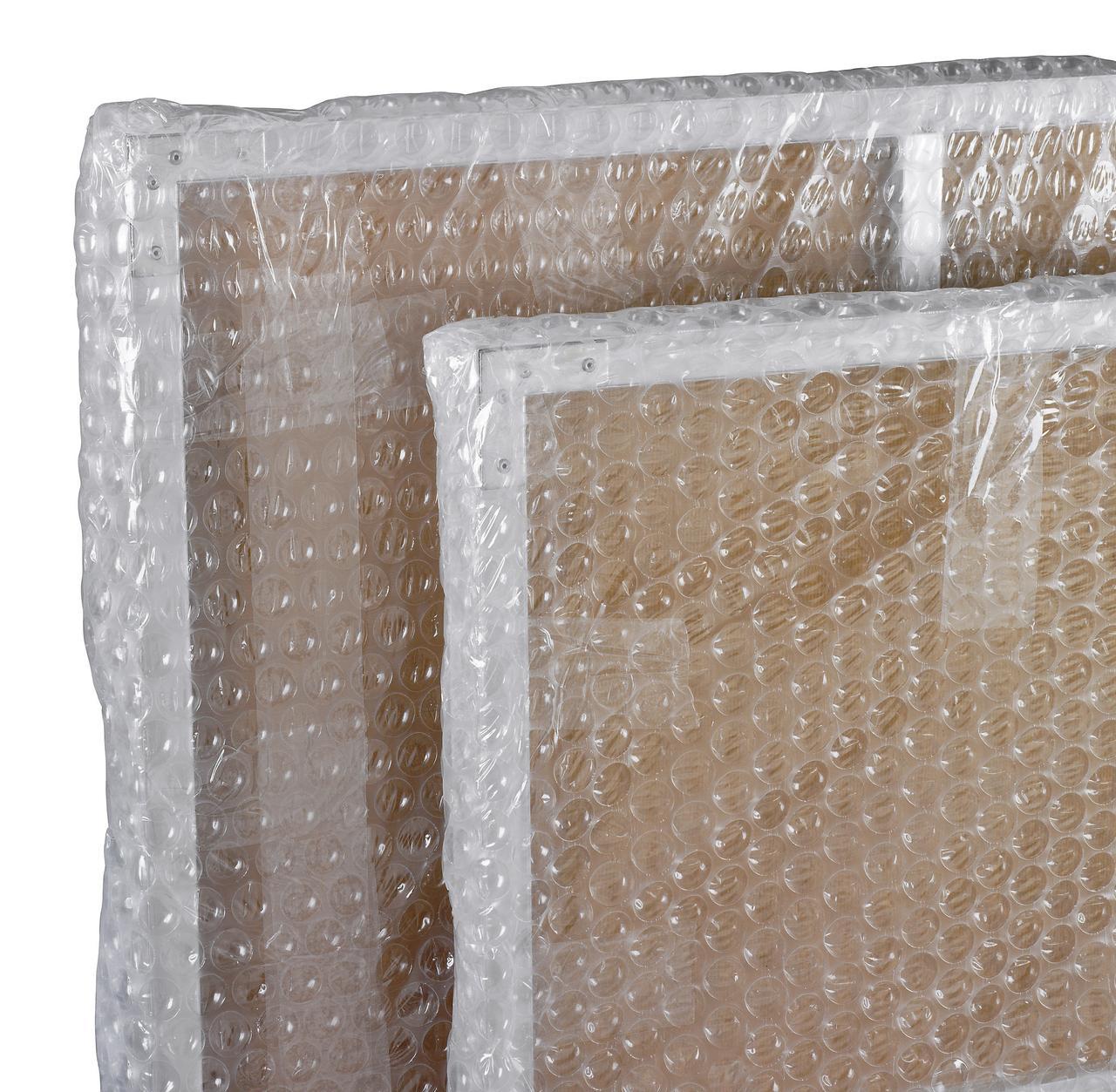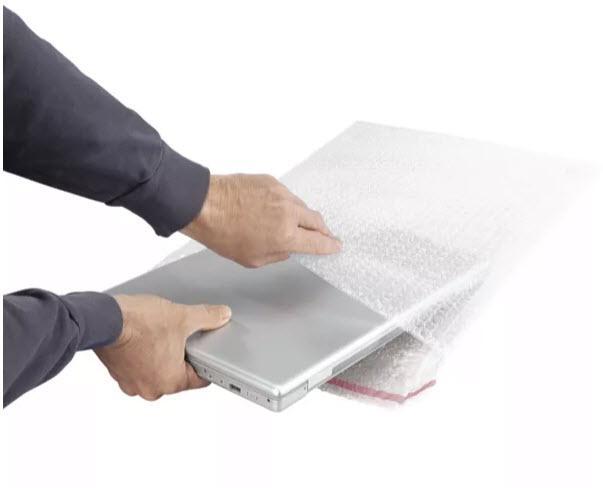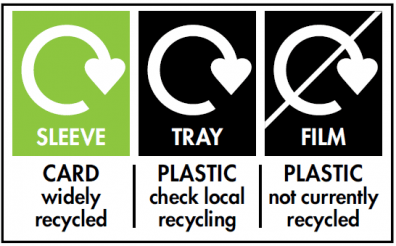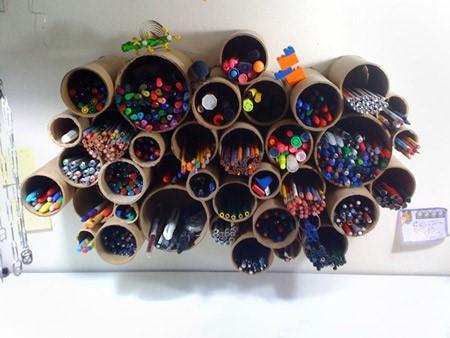Sometimes your packaging just needs a bit of extra protection. Sure, you can protect your goods with a solid cardboard box but occasionally it needs a little extra cushioning to make sure all your goods arrive in top condition. Enter Bubble Wrap! One of the packaging industries most recognisable players and top shelf stress relief for those who pop it. But it can be a little difficult to fully appreciate the good and the bad of bubble wrap.
We’ve put together the ultimate guide for all things bubble wrap to make sure you know everything you need to know about our air-filled packaging superstar.
What is Bubble Wrap?
Bubble wrap is a plastic sheet that is covered in a series of air-filled pockets or “bubbles”. These provides a soft, protective barrier around items that helps to prevent damage from bumps, shocks, and other types of impacts while being soft and malleable enough to easily cover most products.
The bubbles in bubble wrap are typically made of low-density polyethylene (LDPE), which makes up the majority of our product-base, and they come in various sizes and thicknesses to suit different needs. Bubble wrap is lightweight, flexible, and easy to cut, making it extremely versatile for protecting goods.
FUN FACT 1: Bubble wrap was originally intended to be used as wallpaper: In the late 1950s, engineers Alfred Fielding and Marc Chavannes tried to create a new type of wallpaper that was textured. They initially tried to market it as a green alternative for insulation but luckily its true calling as protective packaging shined through.
What’s great about Bubble Wrap?
Bubble wrap’s versatility has turned it into a household name, it’s qualities work not only for protection but also insulation. Here are some of the key features of bubble wrap that make it so popular:
- Lightweight: Bubble wrap is incredibly lightweight, making it easy to transport and handle. This is perfect for a product intended to be used as void-fill, filling the space without adding lots of weight.
- Cushioning: It’s obvious on the face of it but the air-filled pockets work to absorb shock and prevent damage to your items during transit or storage. Bubble-wraps superior cushioning power has made it the go to for many business packaging arms.
- Durable: Bubble wrap is also very durable – while easy tear variants may exist to help with the tearing and shaping of the packaging, overall the plastic is very resistant to damage which will help with number 5 on this list.
- Flexible: Bubble wrap is very malleable, making it easy to mold and shape to your items. This allows you to wrap items of all shapes and sizes, ensuring that they are protected from damage during transit or storage. This also makes it a flexible solution as it can fit near any packaging operation.
- Recyclable: Bubble wrap is made from a recyclable material, making it an eco-friendly choice for packaging and insulation. By recycling bubble wrap, you can help to reduce waste and protect the environment.
Bubble wrap has a lot of strengths and plenty of things going for it, but it isn’t the perfect solution. While the majority of customers will find bubble wrap an excellent addition to their packaging operation, there might be a better fit. Which is why it’s vital to also know:
What are the downsides to Bubble Wrap?
While bubble wrap is a popular and effective material for cushioning and protecting items during shipping and storage, there are also some downsides to consider:
- Environmental Impact: Bubble wrap is made of plastic and is not biodegradable, which can have a negative impact on the environment if not disposed of properly. It is important to recycle bubble wrap whenever possible to reduce waste and conserve natural resources, we sell recycled bubble wrap as an eco-conscious product and encourage customers to recycle.
- Cost: Bubble wrap can be more expensive than other packaging materials, especially for certain bubble sizes – while something that we try and mitigate, our sales advisors will suggest better priced options if it is appropriate.
- Space Requirements: Bubble wrap is light but bulky and can take up a lot of room. This can be problematic for those with limited storage space, as bubble wrap can quickly become a clutter issue.
- Potential disruption: While unlikely, the air pockets in bubble wrap can burst when mishandled which impacts its use as protective packaging. This can be especially frustrating when trying to wrap delicate items and can result in lost time and resources.
- Limited Reusability: Once bubble wrap has been used, it is often not practical to reuse it, especially if it has been punctured or torn which is why recycling and using eco-responsible bubble wrap options is so important.
While bubble wrap is a useful and effective material, it’s important to consider both the benefits and downsides before deciding whether it is the best choice for your packaging or cushioning needs. In some cases, alternative materials such as Eco Flo or Paper Void-Fill may be more environmentally friendly and cost-effective options.
FUN FACT 2: Popping Bubble Wrap has been shown to relieve stress and release dopamine in some people. A study in 1992 proved that the popping of bubble wrap reduces stress and even made the popper feel less tired!
What are the main usages for Bubble Wrap?
Primarily, packaging. Bubble wrap is at its best when you need to protect delicate items from damage during shipping, storage, or transport. Some of the most common uses for bubble wrap include:
- Storage: Bubble wrap can be used to protect items during storage, especially if you are storing items long-term. The cushioning properties of bubble wrap can help to prevent damage from occurring while items are in storage.
- Art and Collectibles: Bubble wrap is an excellent method for protecting art, antiques, and other valuable items. The air cushion prevents any dings or scratches from occurring and is light enough to not cause any itself.
- Electronic Devices: As circuits and switchboards have gotten smaller and more delicate, keeping them protected in transit to avoid being jostled too hard has become even more important. Bubble Wrap is the perfect way to avoid this damage. This sensitivity also makes packing peanuts an uncertain help as tiny particles could clog up the workings while the plastic bubble wrap will shield it easily.
- Glassware: This one is almost an immediate visual cue. The delicate vase enshrouded in layers of bubble-wrap – but it’s not just for the art scene! TVs, computer monitors and other items with a screen could all benefit from a thin layer of bubble when in transit.
Bubble wrap isn’t essential for every package, some products are tough enough to endure any turbulence in transit, but for the delicates it’s almost a requirement to have this. Its versatility and cushioning properties make it an ideal choice for a wide range of applications.
FUN FACT 3: National Bubble Wrap Day: Bubble wrap is so beloved that it has its own National Bubble Wrap Day, which is celebrated on the last Monday of January every year. The day is dedicated to popping bubble wrap and celebrating its unique characteristics and versatility.
Is Bubble Wrap being phased out?
Given the move away from plastic packaging and the plastic packaging tax, it’s not an unfair question to ask: is bubble wrap going away?
Well, at the moment, there are no plans to discontinue bubble wrap. Bubble wrap remains a popular and widely used material for protecting delicate items during shipping and storage, and it continues to grow – the market for it has grown strongly over the last 8 years
While there have been some efforts to develop more environmentally friendly alternatives to bubble wrap, such as biodegradable packing peanuts and paper-based cushioning, bubble wrap continues to be a popular choice for its versatility and effectiveness.
It is important to note that new products and technologies are always being developed, so it is possible that bubble wrap may eventually be completely replaced by more sustainable or efficient materials in the future. Paper Bubble Wrap in particular is one to keep an eye on, we at RAJA are hoping to eventually make this product much more of a household name.
—
Anything you still don’t know about Bubble Wrap? Leave a comment below and we’ll get back to you with the information you need!













